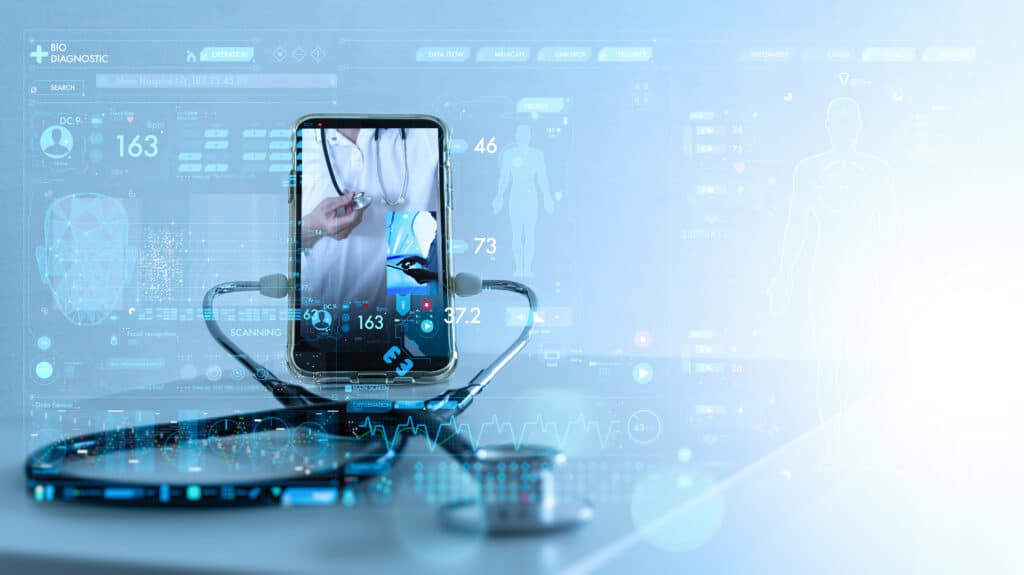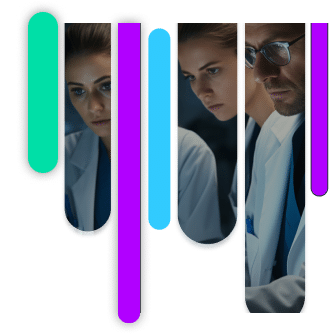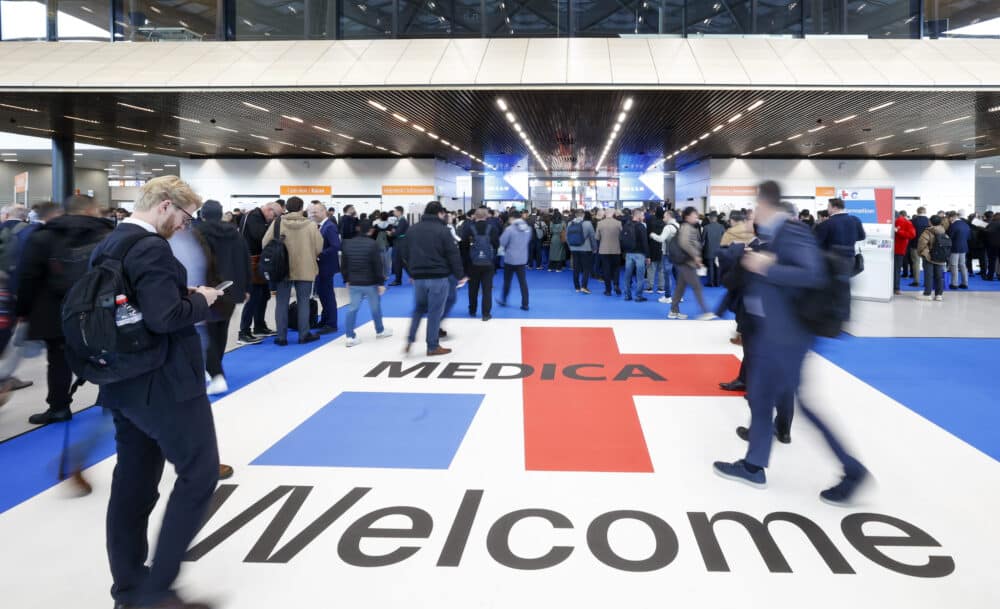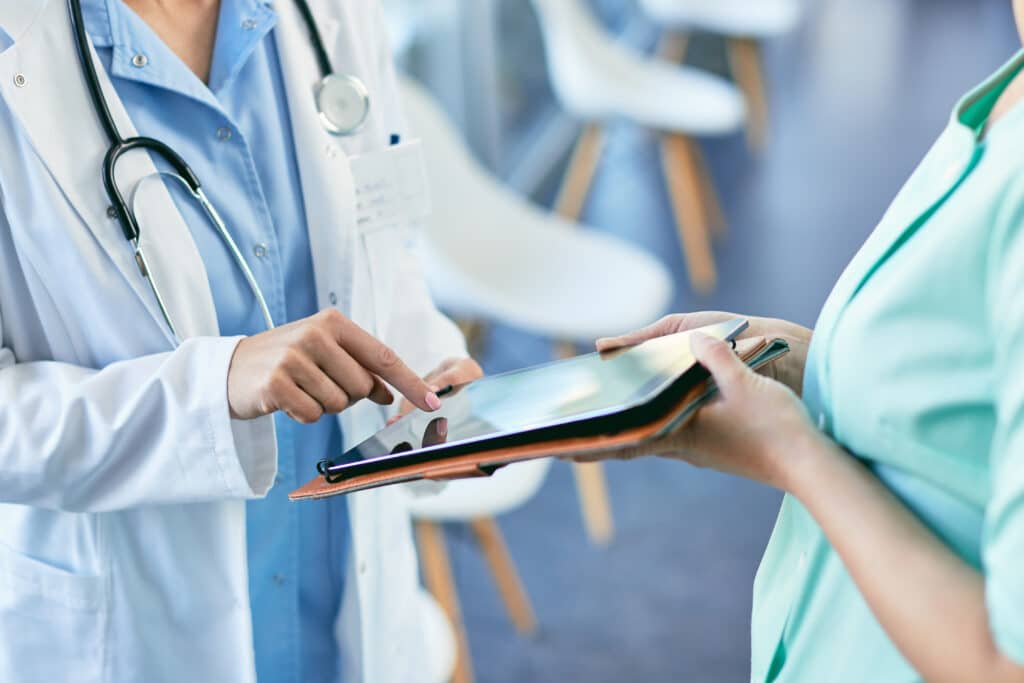Picture this: It’s 2:00 AM and a patient has just arrived in the emergency department. Sepsis is suspected, requiring blood tests, including procalcitonin and blood culture. The physician is inserting a central line, and you need to prepare the correct blood tubes as fast as possible, but you’re not sure about the tube colors. There’s no time to go to a workstation or consult a protocol binder. Instead, you reach for your phone, and in just a few seconds, you find exactly what colors of tubes to grab to get the right blood analysis done. In moments like these, mobile apps are more than just convenient – they’re practical solutions for getting the information you need, when you need it.
In healthcare, there’s never enough staff or money. But with the right tools, we can do more with less. And given that we all have smartphones in our pockets, mobile apps are proving to be practical solutions for getting quick answers, accessing guidelines, and communicating more effectively. When you know what app to use and how to use it, it can be genuinely helpful.
The evolution of mobile apps in healthcare
Mobile apps first entered healthcare primarily through consumer health and fitness applications – tracking heart rates, logging exercise, and reminding patients to take their medications. But for those of us working in emergency care or critical care, the real impact came when apps started to address the intense, information-heavy demands of our work.
Back in 2009, when I worked as a nurse in a PACU in Paris, our department was trying to enhance care for non-French speaking patients. Drawing on my university Mandarin language studies, I laboriously created cards with useful phrases translated into Mandarin. But just a few months later, Google Translate started to be commonly used and instantly solved a problem that had taken us weeks to patch together. It made communication with our Chinese-speaking patients so much easier – as well as faster and more precise! Fast-forward to today, and I’m seeing mobile apps being used by nurses for drug preparation, accessing lab test guidelines, and coordinating with other clinicians.
Mobile app adoption by hospitals
Around the world, some hospitals have begun to adopt mobile technology to support their clinical staff, but it’s gradual and varies greatly from region to region. In Norway, for example, some hospitals provide mobile phones with professional applications to their clinical teams, enabling quick access to patient information and critical protocols. In contrast, places like France and the UK have been slower to adopt this kind of technology, often citing financial and regulatory hurdles.
When hospitals don’t provide these tools, clinicians often use their own personal devices, typically turning to free apps, since subscriptions can be a costly expense that their employers don’t cover.
Mobile app adoption by clinicians
According to a 2023 integrative review, mobile applications have made significant contributions to pre-hospital care, improving communication, decision-making, and access to clinical guidelines.1 The findings underline how mobile apps are being utilized by clinicians even before patients reach the hospital, highlighting their growing role in early-stage critical care.
Many doctors and nurses use their smartphones to access critical medical references and guidelines during busy shifts. Mobile apps like VIDAL Mobile and BCB Mobile are frequently used by clinicians for quick reference to medication information in France, and similar apps are used in other countries. In addition, emergency responders often use specialized apps for critical decisions, such as vehicle rescue and trauma response.
A 2023 scoping review found that smartphones and mobile apps are widely used by physicians for communication, medical education, clinical decision-making, and accessing critical medical information.2 This highlights how mobile apps have become practical tools for clinicians, especially in environments where institutional resources are limited.
While many mobile apps are practical and widely used, not all of them survive long-term. If the user experience is clunky or the information is unreliable, clinicians tend to abandon them quickly. In emergency and critical care, we simply don’t have the time for slow or confusing apps.
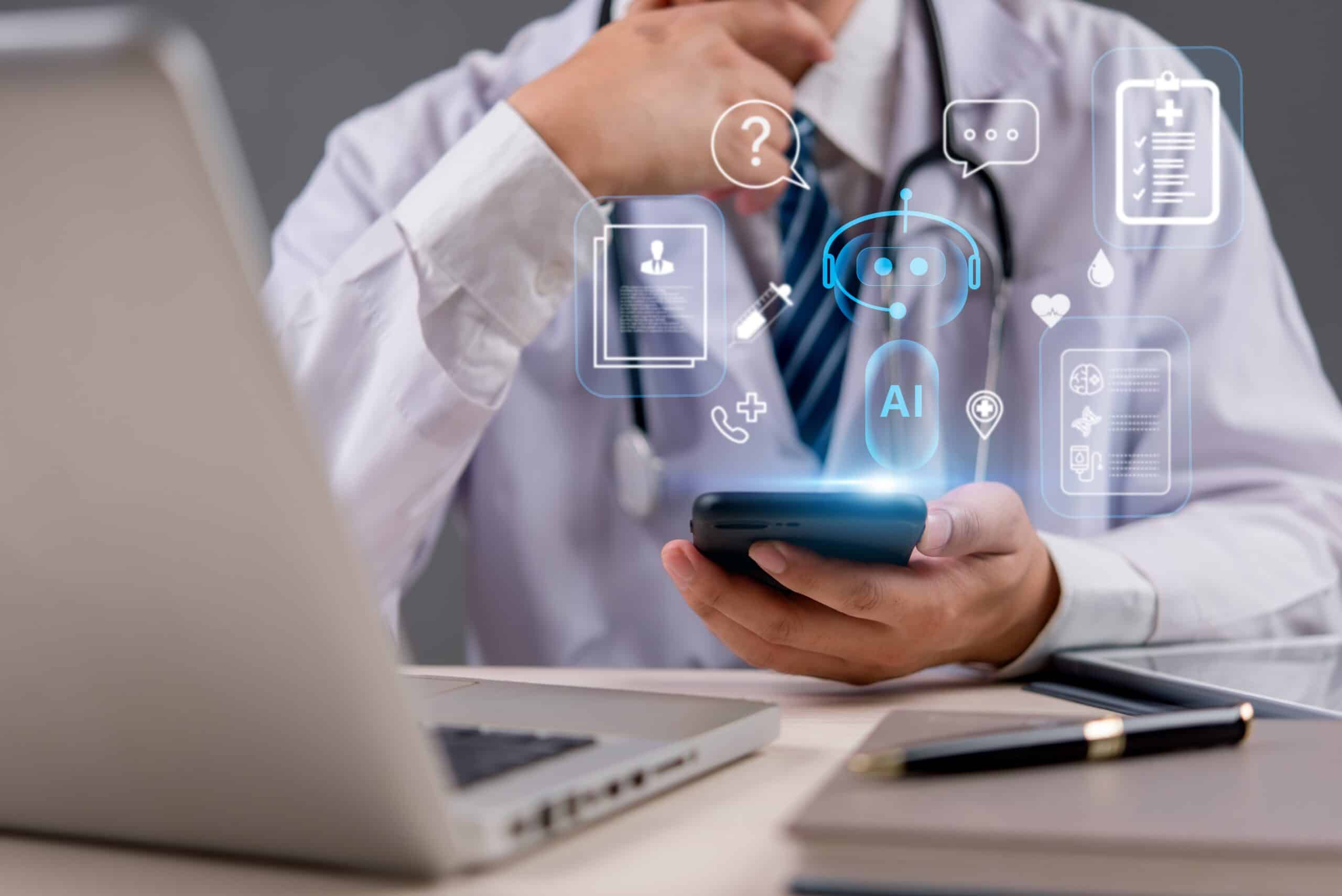
The impact of mobile apps in emergency and critical care
Emergency and critical care settings require split-second decisions and immediate access to information. In these high-pressure environments, mobile apps have been designed to assist with precise diagnoses and treatments. Many of the apps serve as digital versions of established medical references, providing information on infectious diseases, laboratory values, pathogens, differential diagnoses, and treatments.
When the right app is at your fingertips, it can feel like a lifesaver. Mobile apps streamline drug preparation, ensure proper lab sample collection, and reduce the time spent searching for critical information.
For example, firefighters in France rely on the Rescuecode app to identify safe points to cut into a car to extract people safely without risking an airbag explosion. It instantly provides critical information specific to the car model and year, eliminating the need to flip through paper guides during these high-pressure events. I’m a volunteer firefighter, and I know from personal experience what a difference a mobile app like this can make!
Medical ID is an Android app, similar to the Medical ID feature on iPhones, that proves useful in emergency and critical care. It allows first responders to access critical medical information directly from a lock screen without needing the phone’s passcode. This ensures essential data is accessible even if the patient is unconscious or unable to communicate.
From medication safety checks to emergency language translation, mobile apps support us in making faster, more informed decisions, ultimately improving patient outcomes and clinician efficiency.
Challenges clinicians face with mobile apps
Despite their advantages, mobile apps in healthcare face significant challenges. A 2022 literature review found that many mobile health (or mHealth) studies encounter significant participant dropout, impacting their effectiveness.3 This highlights the need for user-friendly designs and reliable content to ensure clinicians continue using them effectively. In emergency and critical care, if an app is slow, confusing, or unreliable, it is quickly abandoned – there simply isn’t time to navigate clunky interfaces when every second matters.
Key challenges include:
- Usability: If an app is slow, confusing, or unreliable, it is quickly abandoned. In emergency and critical care, there simply isn’t time to navigate clunky interfaces.
- Cost: Financial constraints often prevent hospitals from providing dedicated mobile devices to staff, which results in many clinicians using their own phones.
- Consistency: The lack of standardization across clinical teams leads to inconsistencies in how apps are used for tasks like drug preparation and documentation. One nurse might use one app for drug preparation, while another uses a completely different one, risking inconsistency.
- Privacy: Privacy and data security are also major concerns, particularly when apps like WhatsApp are used for patient information exchange. I’ve seen WhatsApp groups where patient information (even pictures!) is exchanged – an approach that, while practical in emergencies, is far from ideal.
- App overload: The sheer number of available apps can be overwhelming, making it difficult to determine which ones are reliable and useful. With hospitals often reluctant to standardize these tools, clinicians are left to experiment with different options on their own, adding unnecessary complexity to their workflow.
Key takeaways
- Mobile apps can be invaluable in emergency and critical care by providing fast access to information, especially in high-pressure situations.
- Clinicians increasingly rely on their own smartphones to consult medical guidelines, help them prepare medications, and communicate with colleagues during busy shifts.
- The usefulness of an app depends heavily on usability, reliability, and relevance. Clunky or confusing tools are quickly abandoned.
- Challenges such as app overload, lack of standardization, and privacy concerns highlight the need for thoughtful integration of mobile apps in clinical workflows.
Concluding thoughts
Mobile apps have real potential to make everyday tasks in emergency and critical care easier and faster. But their true value only comes when the right ones are used correctly. In a world where there’s never enough time, staff, or resources, knowing which apps can help and how to use them can make all the difference. Because in emergency and critical care, every second counts.
For hospitals looking to harness the benefits of mobile technology while addressing challenges like standardization and security, iMDsoft offers MobileVision, a dedicated app for nurses that provides secure, instant access to up-to-date patient information. It also allows quick, on-the-go updates to patient records, supporting accurate documentation at the point of care. Designed for the realities of critical care, MobileVision supports faster decisions, smoother workflows, and more coordinated care, with all the convenience of a mobile device.
Want to see how MetaVision clinical information system is shaping critical and acute care worldwide? Check out the iMDsoft Newsletter for success stories, solutions, and industry trends.
FAQs
-
Is it safe to use personal mobile devices for clinical tasks?
While common, using personal phones raises concerns about data security, especially when apps like messaging platforms are used without proper safeguards. Some mobile apps implement various security measures, such as encryption and secure authentication protocols, to protect user data. It's essential to choose apps that comply with healthcare regulations and to be aware of the app's data handling policies.
-
What should clinicians look for when choosing a mobile app for clinical use?
Clinicians should look for apps that are evidence-based, regularly updated, easy to use under pressure, and compliant with data protection regulations. Peer-reviewed sources or endorsements from professional bodies can also guide recommendations.
-
How can hospitals evaluate the reliability of a clinical mobile app before allowing its use?
Hospitals can assess apps by reviewing the developer’s credentials, checking for regulatory compliance, analyzing user feedback, and testing usability in clinical scenarios. Some institutions may also use formal app evaluation frameworks.
-
Can mobile apps be integrated with hospital information systems?
Some mobile apps are designed to interface with electronic medical records (EMRs) or hospital systems, but integration often depends on the hospital's IT infrastructure, app compatibility, and data governance policies.
-
"Contributions of Mobile Applications to Pre-Hospital Care: Integrative Review." ResearchGate, 2023, https://www.researchgate.net/publication/378673495_Contributions_of_mobile_applications_to_pre-hospital_care_integrative_review
-
“Smartphone and Mobile App Use Among Physicians in Clinical Practice: Scoping Review.” JMIR Mhealth Uhealth, 2023, https://mhealth.jmir.org/2023/1/e44765
-
"Challenges in Participant Engagement and Retention Using Mobile Health Apps: Literature Review." Journal of Medical Internet Research (2022). https://www.jmir.org/2022/4/e35120





 Back to lobby
Back to lobby 